Employees around the world are loathed to hear these two words: performance review. It is an unsettling prospect for both reviewers and those being reviewed.
Nobody wants to deliver bad news, and employees definitely don’t want to receive it—a poor review could lead to altered job prospects within the company, or worse, termination.
But most of the time, a performance review is quite a standard process—your achievements are measured against the goals set and you work towards improving yourself every year.
It’s the fear of that rare worst-case scenario that makes the procedure so terrifying.
How can employers and HR managers make the process better for everyone involved? By using human resources templates that will put everyone at ease.
We look at five performance review templates that will make the review process easier and less worrisome for all involved:
- Simple Performance Review
- Self Performance Review
- Monthly Performance Review
- Quarterly Performance
- Annual Performance Review
We describe how best to use these templates and why they work to ease the worries of employees.
1.Simple Performance Review
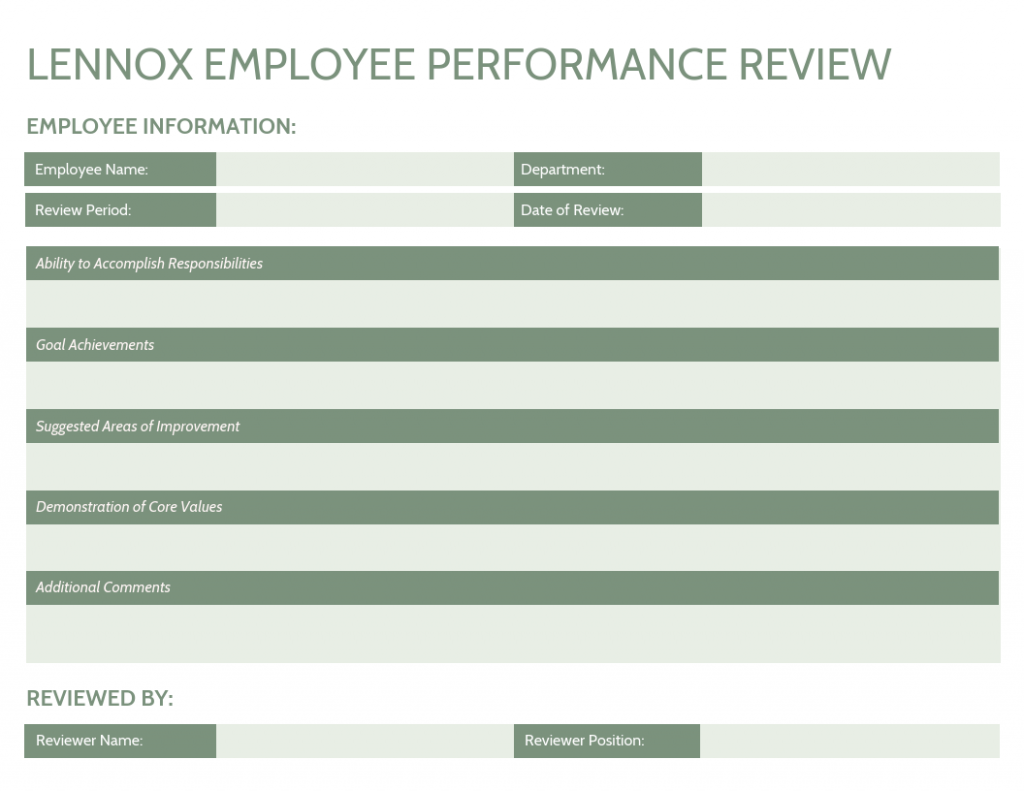
For companies conducting regular performance reviews—weekly or bi-weekly—a simple performance review template will be sufficient to examine the performances of an employee.
Employees aren’t expected to reach huge targets in a short period of time, and the simple template effectively keeps track of the limited goals and achievements for small durations.
A simple review template isn’t meant to handle large amounts of data and information—which is why it works as a study of achievements over a short period of time.
At the end of the month or quarter, these review sheets can be collated to make a thorough examination of what has been achieved and what areas require improvement.
This template also works as a method of record-keeping for employers—one doesn’t need to be overly goal-oriented with the simple review.
A few notes are enough to reflect an employee’s progress in improving influencer outreach or reaching sales targets
The simple review looks less intimidating to employees, which makes the review process a more positive experience for everyone involved.
2. Self Performance Review
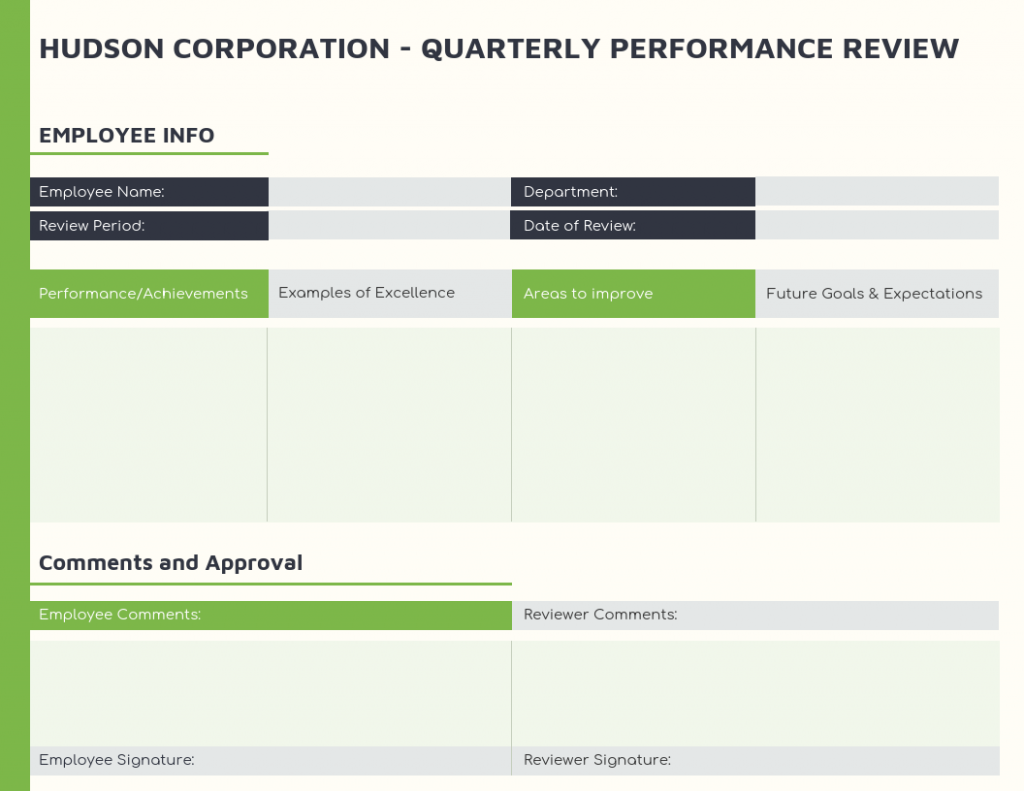
One way of improving the performance review process is by removing outside interference, such as a manager or department head.
They could be unintentionally making the situation more stressful for the employees by either being too eager, too forceful or by expecting feedback the employee feels they can’t give.
Instead, ask employees to fill in a self-performance review like in the above example, and pair it with a personality quiz to make the process more stimulating.
Employees will feel more confident about writing a thorough assessment of their own than if they felt pressurized by their managers.
With a self-performance review template, the organization could offer employees certain benchmarks to compare their performance too, which will further simplify the process.
And for managers concerned about the truthfulness of a self-assessment, they might be surprised by how honest people can be.
Plus, the self-assessment could be followed up with a discussion with the manager about their perception of the employee’s achievements in that period.
Such a feedback session will be more palatable to employees and managers, making the process more streamlined and comfortable.
3. Monthly Performance Review
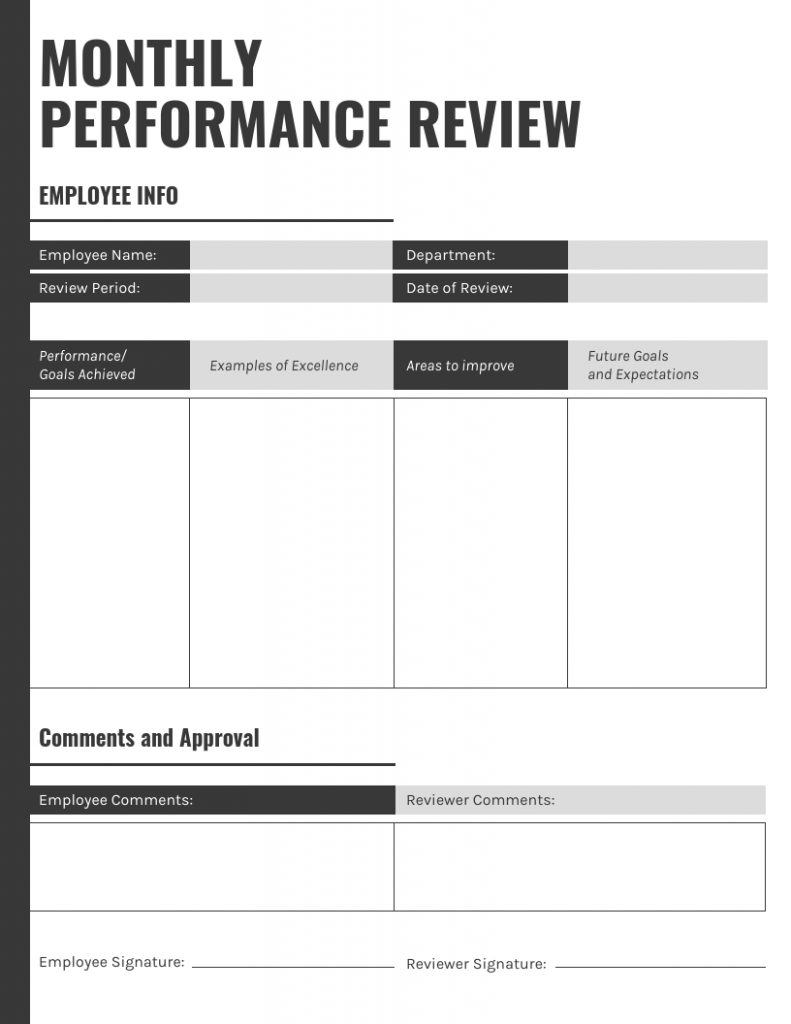
Numerous organizations have begun conducting monthly performance reviews for their employees and teams.
A monthly review works for companies with employees on short-term contracts and for new employees in their probationary period.
Once the employees’ transition into full-time contracts—because their customer loyalty numbers have improved—their review formats can be updated to quarterly or annual, depending on the organization’s processes.
Monthly performance reviews are also a great way to assess employee progress with regard to new projects.
These kinds of projects have the potential to suffer errors that could become catastrophic if not caught early enough.
A monthly review system will ensure that employees are on track and that their skills are at the level they need to be at.
Employees may also prefer the monthly system as they get regular reports on their progress, instead of finding out at the end of the year how well, or badly, they have conducted themselves.
4. Quarterly Performance Review
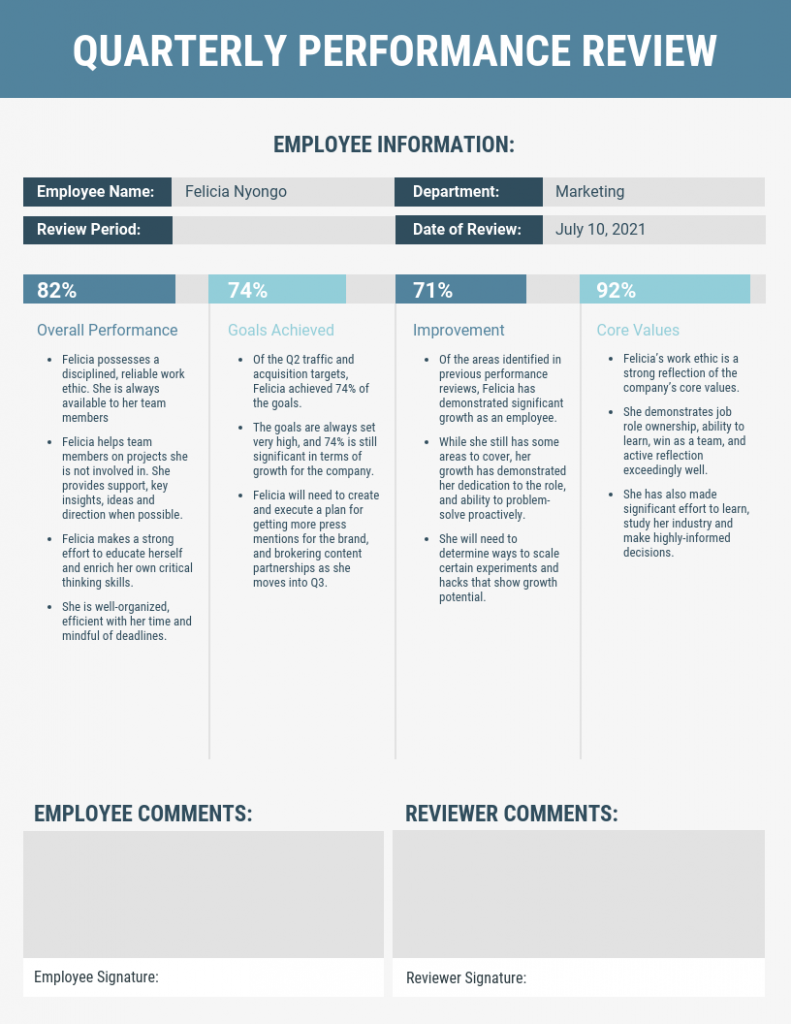
Quarterly performance reviews are the most popular format in most organizations, as businesses tend to divide their business by quarters in the year.
In other words, it only makes sense for every quarter’s goals to be examined against the achievements of employees.
Quarterly performance reviews can be conducted during face-to-face meetings between employees and managers.
Alternatively, the quarterly report can be created based on monthly or bi-weekly reviews in that quarter.
The reason why quarterly reviews work and are so popular is that there is concrete data to judge—there has been sufficient time for employees to achieve their goals and make progress.
This helps put the employee at ease—they don’t feel an unnecessary burden to achieve large order fulfillment targets within too short a period.
The layout of the template also makes the process more comfortable—percentages show how well the employee has done. There is also room for more detailed feedback which makes the document easy to refer to later on.
5. Annual Performance Review
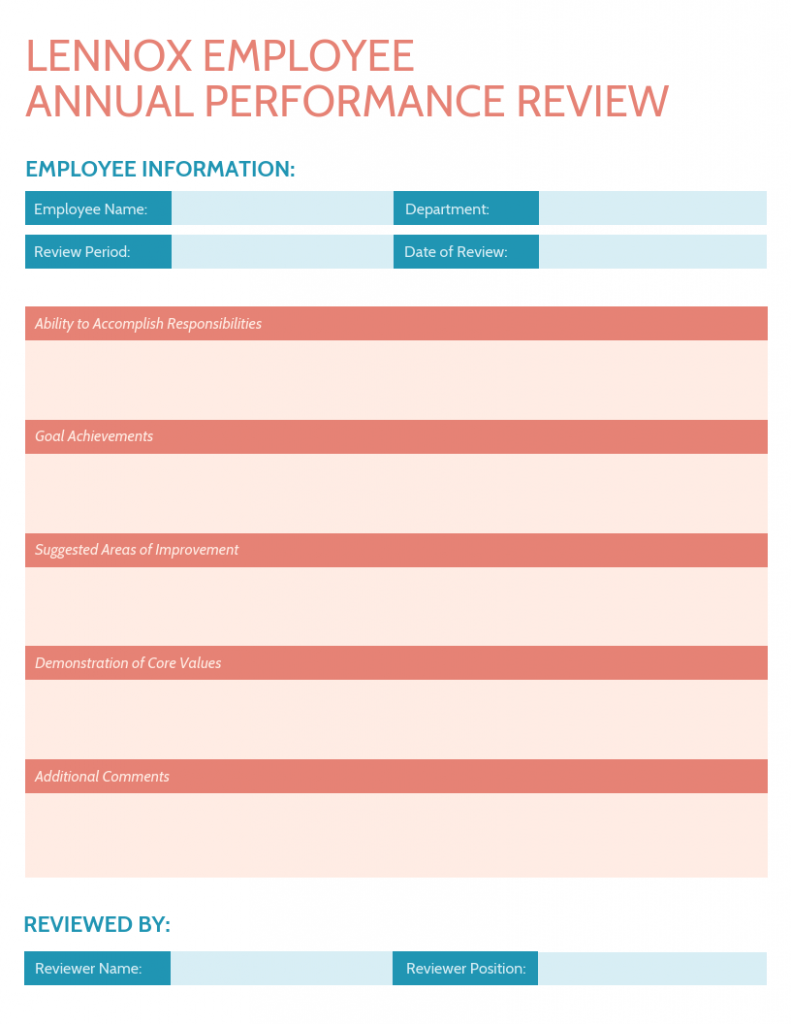
Annual reviews are par for the course in most organizations.
But to make the annual performance review process better for employees, it is best to pair it with monthly or quarterly reviews.
An annual review on its own will have too much information to examine—which can be complicated and lead to mistakes.
Instead, the annual review can compile the data from the entire year’s reviews to present one comprehensive report.
In other words, the annual performance review is the cliff notes version of an employee’s performance over the year.
This method makes the annual review process less daunting for employees—they have a fair idea of what they have been achieving over the year, and how they have improved.
The annual review won’t come as a shock to employees who have not been informed of their achievements or failures until the end of the year.
As a document to help improve the review process, the annual review can be painless and even comforting if organizations are transparent with their employees.
Conclusion
The performance review process need not be as unnerving as most employees, and even managers, expect.
With the right human resource templates, the process can be invigorating and helpful, giving employees the information they need in a way that is respectful and understanding.
These five performance review templates can all be customized to reflect the branding of the business and used for a number of years without needing too many updates.
Now that you have these templates for your organization, you can conduct thorough performance reviews that will put your teams at ease.
All performance review templates sourced from Venngage.